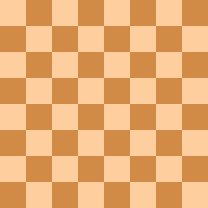chess.wikisort.org - Player
Ladislav Prokeš (7 June 1884 – 9 January 1966) was a Czech chess master and one of the most prolific composers of endgame studies in chess. He was born and died in Prague.[1]

Prokeš was joint Czech Champion in 1921[1] and played for the Czech Olympiad team in 1927, 1928, and 1930.[2] In 1951 he published a collection of studies "Kniha šachových studií". His 1,159 endgame studies, as listed in Harold van der Heijden's database, rank fourth among all composers.[3]
Prokeš maneuver
| a | b | c | d | e | f | g | h | ||
| 8 |  | 8 | |||||||
| 7 | 7 | ||||||||
| 6 | 6 | ||||||||
| 5 | 5 | ||||||||
| 4 | 4 | ||||||||
| 3 | 3 | ||||||||
| 2 | 2 | ||||||||
| 1 | 1 | ||||||||
| a | b | c | d | e | f | g | h | ||
The Prokeš maneuver is a tactic in chess that enables a rook to draw against two advanced pawns in a chess endgame. Prokeš composed an endgame study in 1939 which illustrated the Prokeš maneuver for the first time.[4] The solution begins:
- 1. Kg4 e2
- 2. Rc1+ Kd4
- 3. Kf3 d2
and Black threatens to promote a pawn, which would win. But White forces the draw with:
- 4. Rc4+! Kd3
- 5. Rd4+! Kxd4
- 6. Kxe2 Kc3
- 7. Kd1 Kd3 stalemate
The idea is, that by vacating the c1-square on the fourth move, White's rook prevents Black's pawn from capturing on c1. The white king is then able to reach the d1-square, stopping the pawn. The position after 6.Kxe2 is drawn (see King and pawn versus king endgame).
References
Notes
- Whyld, Ken (1986), Chess: The Records, Guinness Books, p. 159, ISBN 0-85112-455-0
- Prokeš, Ladislav team chess record at olimpbase.org
- My Computerised Collection Archived 2005-05-13 at the Wayback Machine by Harold van der Heijden. EG 130, October 1998, page 413.
- Article by Tim Krabbe (See Diagram 12.) Viewed 6 August 2007
Bibliography
- Averbakh, Yuri; Kopayev, Nikolai (1987), Comprehensive Chess Endings: Rook endings, vol. 5, Pergamon, pp. 23–24, ISBN 0-08-026908-7
- Matanovic, Aleksandar (1986), Encyclopedia of Chess Endings, vol. 3, Chess Informant, p. 26, ISBN 86-7297-005-5
External links
- Ladislav Prokes at Chessgames.com
- Ladislav Prokes: The Player's Composer by A. J. Roycroft. EG 7, January 1967, p. 1.
- Obituary for Ladislav Prokes by A. J. Roycroft. EG 5, July 1966, pp. 104–05.
На других языках
- [en] Ladislav Prokeš
[ru] Прокеш, Ладислав
Ла́дислав Про́кеш (чеш. Ladislav Prokeš, 7 июня 1884 (1884-06-07), Прага — 9 января 1966, Прага) — чешский шахматист и шахматный композитор-этюдист, профессор. Судья международной категории по шахматной композиции (1956)[4], видный представитель чешской школы в композиции.Другой контент может иметь иную лицензию. Перед использованием материалов сайта WikiSort.org внимательно изучите правила лицензирования конкретных элементов наполнения сайта.
WikiSort.org - проект по пересортировке и дополнению контента Википедии